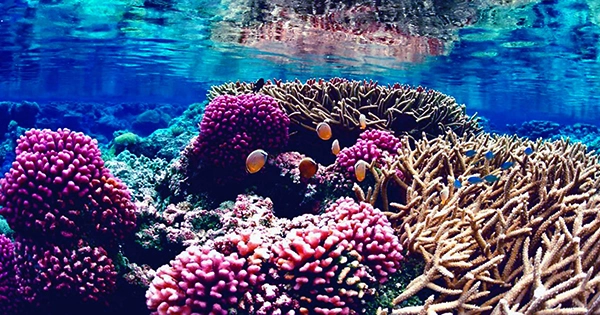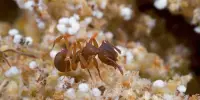According to new research, coral reefs in one section of the Pacific water have likely adapted to increased water temperatures, which could decrease the potential bleaching effects of climate change.
A Newcastle University-led study on the Pacific Island nation of Palau found that historic increases in coral reef heat tolerance are achievable. The findings show how, if global carbon emissions are reduced, this capacity could help to mitigate future bleaching effects.
The authors modeled multiple possible future coral bleaching trajectories for Palauan reefs, each with a distinct estimated rate of temperature tolerance augmentation based on decades of field observations. They discovered that if coral temperature tolerance continues to rise at its most plausible historic rate throughout the twenty-first century, considerable reductions in bleaching impacts are feasible.
The findings, which were published in the journal Nature Communications, confirm the scientific agreement that the severity of future coral bleaching is dependent on carbon emission decreases. High-frequency bleaching can be completely avoided in some reefs under low-to-middle emission scenarios, such as when the Paris Agreement obligations are met. Such bleaching effects, however, are inescapable under high-emission scenarios if humanity continues to rely on fossil-fueled development.
Liam Lachs, the study’s primary author, works in Newcastle University’s Coralassist lab. “Our study shows the presence of ecological resilience to climate change, but it also emphasizes the importance of meeting Paris Agreement commitments to effectively preserve coral reefs,” Lachs said.
“Over decadal time scales, we quantified a natural increase in coral thermal tolerance that can be directly compared to the rate of ocean warming.” While our research provides some hope, it also stresses the importance of continuing to reduce carbon emissions in order to combat climate change and ensure the future of these essential ecosystems.”
Dr. James Guest of Newcastle University’s School of Natural and Environmental Sciences, a study co-author, added, “We know that coral reefs can increase their overall thermal tolerance over time through acclimatization, genetic adaptation, or shifts in community structure, but we know very little about the rates at which this occurs.” This study assesses the pace of improvement in tolerance since the late 1980s using data from a remote Pacific coral reef system. The findings give some optimism that reefs can withstand rising temperatures, but only if climate change is addressed aggressively.”
The lead author conducted this investigation as part of a joint visit to Professor Simon Donner’s Climate and Coastal Ecosystems Laboratory at the University of British Columbia in Canada in 2021.
“This study shows the potential for some coral reefs to become more resilient to future climate change-fueled heat waves,” stated Prof. Donner. “However, that resilience can come at a cost in terms of reduced reef diversity and growth.” Without significant reductions in greenhouse gas emissions over the next two to three decades, the Pacific reefs will no longer supply the resources and protection from waves on which Pacific peoples have relied for generations.”
The future of coral reefs
Coral reefs have incredible richness, but they are also experiencing unprecedented reductions due to maritime heat waves and the consequent mass coral bleaching and mortality events. Coral communities must tolerate increasingly strong and frequent marine heat waves in order to thrive in the face of climate change.
The rate at which coral reef thermal tolerance can naturally rise and whether this can equal the rate of ocean warming has remained largely unknown. The Newcastle University team researched prior mass bleaching events, with a focus on the case study of Palau, a remote Pacific coral reef system, to bridge this information vacuum and offer insights into the future resilience of coral populations.
The study also investigated four emission scenarios and their impact on future coral bleaching estimates to evaluate alternative degrees of global action to mitigate climate change and cut carbon emissions.
According to the data, coral thermal tolerance in Palau has likely increased at a pace of 0.1°C every decade since the late 1980s. This increase shows that natural mechanisms, such as genetic adaptation or acclimatization of corals or their symbiotic microalgae, may have contributed to coral heat tolerance improvement.
Prof. Peter Mumby of the University of Queensland and the Palau International Coral Reef Center, one of the study’s co-authors, believes that “some of the upcoming challenges will be to disentangle which mechanisms have driven these potential shifts in tolerance, and to understand the possibility of continued future increases in thermal tolerance.”
















